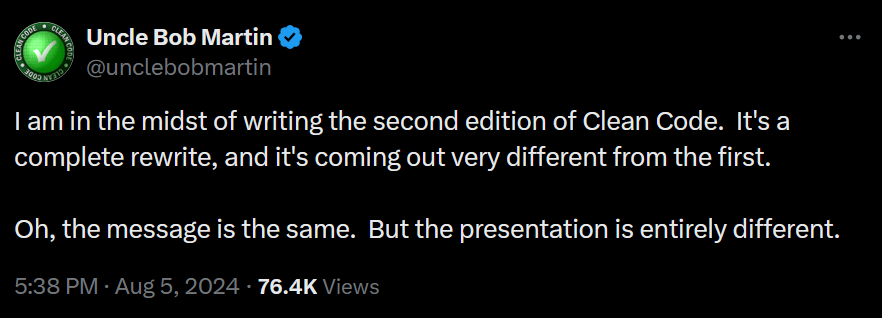this post was submitted on 10 Aug 2024
569 points (97.2% liked)
Programmer Humor
19589 readers
600 users here now
Welcome to Programmer Humor!
This is a place where you can post jokes, memes, humor, etc. related to programming!
For sharing awful code theres also Programming Horror.
Rules
- Keep content in english
- No advertisements
- Posts must be related to programming or programmer topics
founded 1 year ago
MODERATORS
you are viewing a single comment's thread
view the rest of the comments
view the rest of the comments

They do though. Loads of new people to programming read that book and create unreadable messes of a code base that follow all of his advice. I have lost count of the number of times I have inlined functions, removed layers of abstraction and generally duplicated code to get a actual understanding of what is going on only to realize there is a vastly simpler way to structure the code that I could not see until all the layers and indirection are removed. Then to refactor again to remove redundant code and apply more useful layers again that actually made sense.
And that is the problem we have with his book. People that need it take up as many bad habits as they do good ones leading to an overall decline in their code quality. It is not until years of experience that you can understand the bad bits and ignore them. So overall his book is a net negative on the programming world. Not all his advice is bad, but if you can tell that then you likely don't need his advice.
But on the layers of abstractions specifically, he takes this too far. Largely because of the 4 line limit he has. There is a good level of abstraction and I generally find more than 2 or 3 levels of abstraction is where I start to loose any sense of what is going on. He always seems to jump on abstraction as soon as he can, but I find waiting a while and abstraction when you need to to lead to fewer and vastly better layers of abstraction overall.
And adding more abstraction does not help the people of people doing too many things inside a function - they just move it to sub functions rather than extracting the behavior for the caller to deal with. I have never seen him give advice on what that is appropriate, only keeps the functionality of the original function the same and move the logic into a nested function instead and that only covers up the issue of the function doing too much.